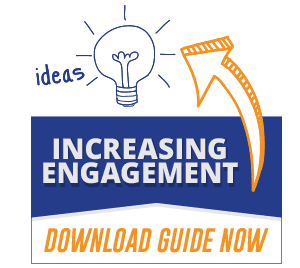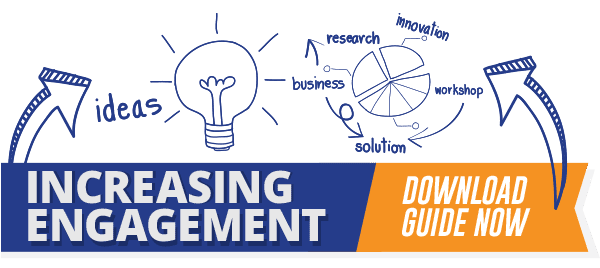By: David Novak, Co-Founder & CEO of David Novak Leadership
Leadership failure is everywhere. I recently did a quick internet search on the topic and you wouldn’t believe the titles that appeared:
- Businesses Don’t Fail, Leaders Do
- 6 Warning Signs of a Leadership Failure
- The Key Causes of Failure in Leadership
- Why America’s Leadership Fails
These titles only scratch the surface! There were pages and pages of articles on leadership failure. Yet success is totally possible if you know and practice a secret I discovered while serving as Co-founder and CEO of Yum! Brands, one of the world’s largest restaurant companies, operating in over 130 countries. The secret is called Heartwiring™ AND Hardwiring™ your leadership. Lots of leaders talk about how to hardwire success through process and I’m a big supporter of that. But I know that hardwired leadership is much more effective if you combine it with Heartwired leadership™. I’m passionate about heartwiring and hardwiring leaders because I know it works. As CEO of a global company, I’ve invested significant time teaching this leadership style to thousands of leaders around the world… and it showed in the results we shared with Wall Street.
But before I explain what heartwiring and hardwiring means, let me share some of my background with you. I’ll start at the beginning…
I was anything but a born leader but I feel absolutely certain I was born to lead and teach. My early education was far from typical when you consider I grew up in a series of trailer parks and ended up living in 23 states by the time I was in seventh grade. Then, rather than getting an MBA or even majoring in business, I enrolled in the journalism school at the University of Missouri. After graduation, I started my career as a $7,200 a year copywriter with the objective of one day being a creative director. My career didn’t turn out exactly as I planned. In fact, through a series of career “accidents,” I left the world of advertising and ended up in the restaurant industry. Over the course of my career, I’ve held many roles:
- Copywriter
- Account Executive
- Head of Marketing for Pizza Hut
- Chief Operating Officer for beverage division of PepsiCo
- President of KFC and Pizza Hut
- Co-Founder and CEO of Yum! Brands
Along the way, I had the privilege of learning from all kinds of leaders from all around the world, from the likes of Jack Welch, Warren Buffett, Jamie Dimon and Howard Schultz. And while I was fortunate enough to learn from Fortune 500 CEOs, I equally loved learning from the restaurant front line managers and franchisees. Through it all, I have been a passionate student of leadership, constantly seeking new techniques and major insights from the smartest and best people I could go see. The lessons I learned and put into practice from this diverse group of leaders shaped me and helped me achieve a fair bit of success. I know I wouldn’t be who I am today without the people who invested in my leadership journey.
Upon retiring from Yum! Brands, I knew there was more work to be done… that my leadership journey was far from over. I became excited about investing in leaders like you by sharing what my team and I learned about leadership over the years, so David Novak Leadership was born.
David Novak Leadership is about Heartwiring Leaders™ and Hardwiring Success™! Let me explain. Early in my career, I had an experience that changed how I thought about my own role as a leader and inspired me to accomplish what, for me, is my greatest example of taking people with me. I was working for PepsiCo and recently became head of operations for Pepsi Bottling. Since I had held mainly marketing positions until then, one of the first things I did was travel to our various plants to meet with the people there and find out how things worked.
While at a plant in St. Louis, I asked what I thought was a pretty straightforward merchandising question to a group of route salesman. I wanted to know what was working and what wasn’t. Right away, someone piped up, “Bob is the expert in that area. He can tell you how it’s done.” Someone else added, “Bob taught me more in one day than I’d learned in two years on the job.” Every single person in the room agreed: Bob was the best there was. I looked over at Bob, thinking he must be thrilled by all this praise. Instead, I saw he had tears running down his face. When I asked him what was wrong, Bob, who had been with the company for over forty years and was about to retire in just two weeks, said, “I never knew anyone felt this way about me.”
I’ve always believed in people, but that experience made me even more determined to be the kind of leader that would never let a person like Bob go through his entire career without being thanked for what he did and encouraged to find out how much more he could do. I wanted the people who worked for me to know that they mattered, and I wanted them to enjoy coming to work each day. I also understood it started with me. It was my job to cast the right leadership shadow, because no one else was going to live up to these principles unless I lived up to them first. This is what heartwiring is all about – becoming a leader who listens to those you lead, cares about them, recognizes them, and acknowledges that every person on your team has value.
Hardwiring Success is all about what you do as a leader: using processes, procedures and discipline to get consistent results.
Heartwiring AND Hardwiring are equally important, because who you are as a leader is just as important as what you do as a leader.
As you join me on my leadership journey to becoming the best leader you can be, I’ll share my personal leadership story – things I did well, as well as my mistakes. I’ll share lessons I learned along the way. I’ll be honest and real, because sometimes the best way to learn is from the success and mistakes of others. I want you to know you’re not alone as a leader. I’ll commit to being one of the most transparent and honest leaders and teachers you’ve ever had.
Let me share what you can expect from David Novak Leadership:
- Profound truths, practically applied rather than textbook, theoretical answers to your leadership questions. I’m committed to sharing what I’ve learned through my experiences (the good, bad and ugly). I’ll also introduce you to other leaders because I want you to have a diversity of wisdom and insights to apply throughout your own leadership journey.
- Transformational change that sticks rather than checklists that fade quickly. I’ll help you think differently about people and leadership so the changes you make are sustainable. One of the best ways to change your leadership style is by doing something different, and I’ll provide insight on actions you can take to change the way you lead.
- Leading by taking people with you rather than the traditional top down, hierarchical leadership style. I am passionate about the importance of taking people with you every step of the way. Top down hierarchies just aren’t as effective, and I want you to have a better way to lead.
John Quincy Adams said, “If your actions inspire others to dream more, learn more, do more and become more, you are a leader.” This is my goal for David Novak Leadership – to inspire you to dream more, do more and become more. Starting this month, you can stay connected with me by signing up to receive our bi-weekly blogs and podcasts. I’ll answer your leadership questions via video each month too. If you’d like to learn more about my leadership journey today, check out my books:
- The Education of an Accidental CEO: Lessons Learned from the Trailer Park to the Corner Office tells the story of how I became CEO and the lessons I learned along the way.
- Taking People With You: The Only Way to Make BIG Things Happen teaches you how to hardwire success by getting your mindset right, having a plan, and following through to get results.
- O Great One! A Little Story about the Awesome Power of Recognition tells the story of a heartwired leader who transformed an organization through the power of recognition.
I’m a firm believer that leadership is about who you are AND what you do. Heartwiring Leaders! Hardwiring Success! That’s what David Novak Leadership is all about. Follow me @DavidNovak on social media, because together, as leaders, we can make a bigger difference! Click here to listen to my podcast with Gregg Dedrick discussing why we began David Novak Leadership.
Subscribe To Our Blog Today
 Step two involved communicating with our managers. We shared our research findings and let them know we not only heard what they said, but we also took action by eliminating barriers. Based on their feedback, we reduced paperwork, provided more drive-thru jackets and increased labor dollars. We also let them know these changes put accountability back in their court and we expected them to achieve better results since the barriers were eliminated.
Step two involved communicating with our managers. We shared our research findings and let them know we not only heard what they said, but we also took action by eliminating barriers. Based on their feedback, we reduced paperwork, provided more drive-thru jackets and increased labor dollars. We also let them know these changes put accountability back in their court and we expected them to achieve better results since the barriers were eliminated.























